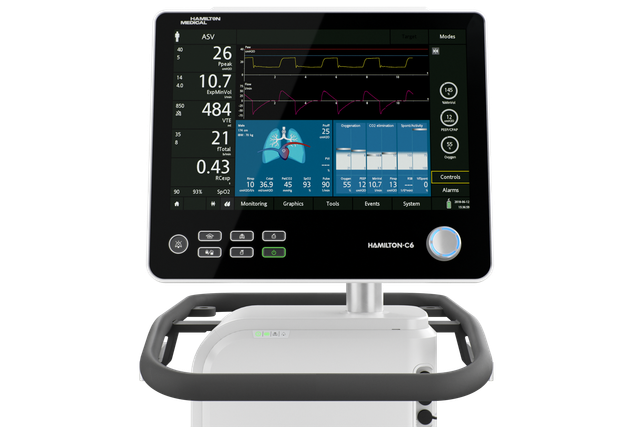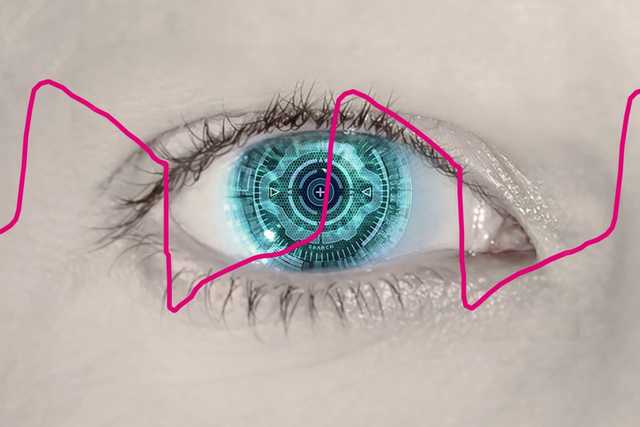
¿Cómo podemos detectar las asincronías? Con un ojo digital
El ojo entrenado de un experto en ventilación es capaz de detectar asincronías analizando las formas de onda de presión o de flujo.
Sin embargo, el estado del paciente puede cambiar entre una respiración y otra y el experto no siempre se encuentra en junto al paciente.
Aquí es donde toma el control el IntelliSync+. Esta tecnología imita el ojo experto para identificar los signos de esfuerzo (disparo) o de relajación (ciclado) del paciente en la forma de onda.
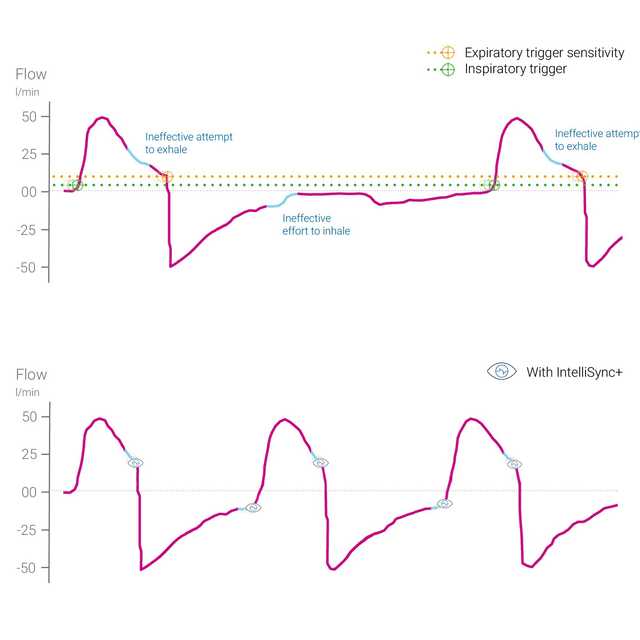
¿Cómo funciona? Principios de IntelliSync+
IntelliSync+ analiza de manera continua las señales de las formas de onda al menos cien veces por segundo. Esto permite a IntelliSync+ detectar el esfuerzo del paciente de manera inmediata e iniciar la inspiración y la espiración en tiempo real, lo que sustituye los ajustes de disparo de inspiración y espiración convencionales.
Para ofrecer la máxima flexibilidad, puede optar por activar IntelliSync+ para automatizar el disparo inspiratorio o el disparo espiratorio, o ambos.

¿Son las asincronías verdaderamente un problema? Examinemos las pruebas
Se observó un elevado número de asincronías importantes entre el paciente y el respirador en el 25 % de todos los pacientes con ventilación mecánica (
El análisis de formas de onda es un método fiable, preciso y reproducible para evaluar la interacción entre el paciente y el respirador. La automatización de este método permite una monitorización continua de los pacientes ventilados o una mejor activación de la respiración y del ciclado (
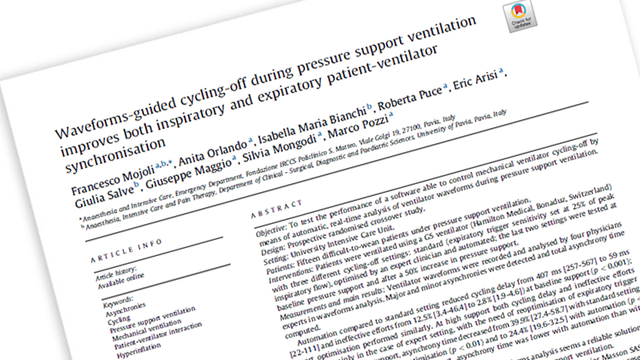
Ciclos de apagado inspiratorio automáticos para una mejor sincronización entre el paciente y el respirador
Mojoli F, Orlando A, Bianchi IM, et al.
Un estudio reciente mostró que el control automatizado de los ciclos de apagado inspiratorio del respirador basado en el análisis en tiempo real de las formas de onda proporcionó un medio fiable para mejorar la sincronización en pacientes con ventilación mecánica.
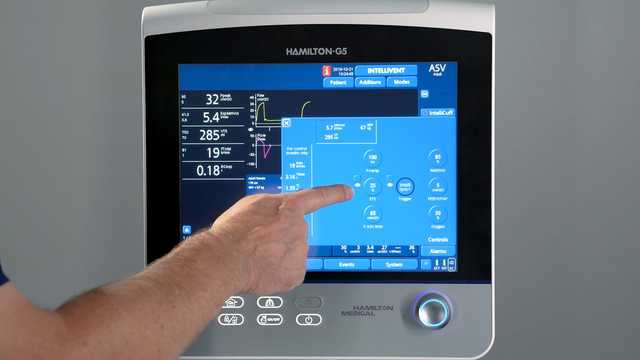
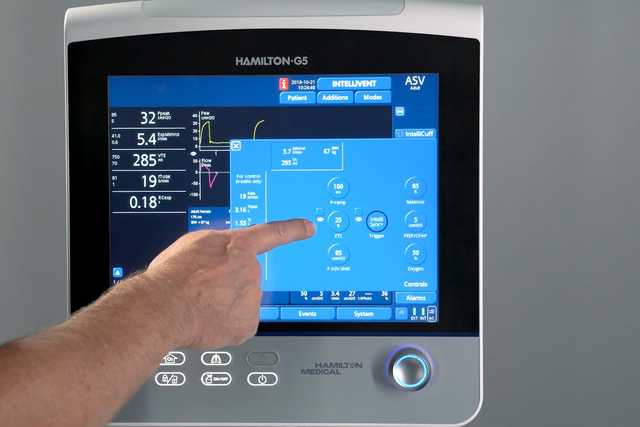
¿Cómo se usa? Configuración y funcionamiento de IntelliSync+
IntelliSync+ es un método completamente no invasivo que no requiere ningún accesorio ni hardware adicionales. Basta con activar la opción en el respirador para utilizarlo con los modos de ventilación invasiva o no invasiva en pacientes adultos y pediátricos.
Dado que IntelliSync+ también puede utilizarse en combinación con los disparos convencionales, tiene la posibilidad de elegir cuándo utilizar IntelliSync+, es decir, durante la inspiración, la espiración o con ambas.

¡Siga aprendiendo! Recursos de formación sobre IntelliSync+

Aprenda a detectar las asincronías más comunes. Hoja de referencia gratuita
Nuestra hoja de referencia de asincronías incluye una descripción general de los tipos de asincronías más comunes, sus causas y cómo detectarlas.
Disponibilidad
IntelliSync+ está disponible de forma opcional para el HAMILTON‑C6 y el HAMILTON‑G5, y se incluye de serie en el HAMILTON‑S1.
Referencias
- 1. Thille AW, Rodriguez P, Cabello B, Lellouche F, Brochard L. Patient‑ventilator asynchrony during assisted mechanical ventilation. Intensive Care Med. 2006;32(10):1515‑1522. doi:10.1007/s00134‑006‑0301‑8
- 2. Tassaux D, Gainnier M, Battisti A, Jolliet P. Impact of expiratory trigger setting on delayed cycling and inspiratory muscle workload. Am J Respir Crit Care Med. 2005;172(10):1283‑1289. doi:10.1164/rccm.200407‑880OC
- 3. Blanch L, Villagra A, Sales B, et al. Asynchronies during mechanical ventilation are associated with mortality. Intensive Care Med. 2015;41(4):633‑641. doi:10.1007/s00134‑015‑3692‑6
- 4. Mojoli F, Iotti GA, Torriglia F, et al. In vivo calibration of esophageal pressure in the mechanically ventilated patient makes measurements reliable. Crit Care. 2016;20:98. Published 2016 Apr 11. doi:10.1186/s13054‑016‑1278‑5


